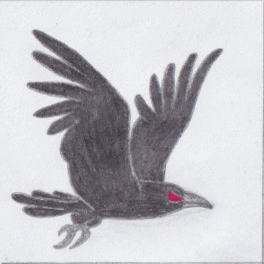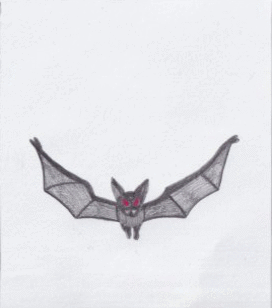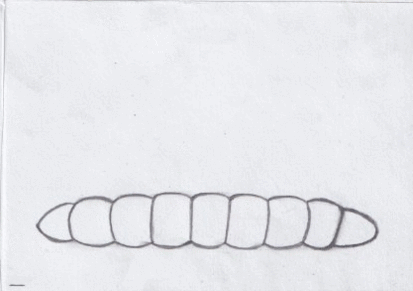zengamesworkshop
Zen joined
This member has provided no bio about themself...
We begin a series of stories about developing and designing a grim pencil adventure about a stray dog. This part will be about the idea of the game and the process of drawing it.
From cute corgi to a sad stray dog
To be honest, we were going to make a cute game about corgi for mobile phones. But from the very beginning, it all went wrong.
It seems that the problem was in the story background - we thought that making a game without narrative was not interesting, so we began to think up corgi's childhood, motivation for actions, and other essential scenario things. But, unfortunately, it was not much of a story, so it began to transform rather quickly
What if the game is not about a corgi but a stray dog? And not with a funny puppy childhood, but with a sad background? And maybe not for mobile phones, but for PCs and, someday, consoles?...
As a result, there was no trace of the optimistic dog story, but actual "dog" noir appeared. It all happened by the rules of the genre: on a chilly January evening, smoking one by one and sipping on a single malt, we sketched out this.

A lonely dog travels around the city at night, squints at the bright light of lanterns, runs away, barely seeing the beams of car headlights and rats lurking underfoot. This city is afraid of it, the dog saw its true face... Well, kinda, on the contrary.
As you can see in the picture, we immediately started dreaming about releasing the game to the store. However, we didn't know that Steam Greenlight does not exist since 2017.
The idea seemed to be quite good - first of all because it can be interestingly developed. Therefore, we began to elaborate the concept: what if the story begins not in the city but in the forest, and gradually the dog comes to civilization? Later, by the way, it turned out that we involuntarily borrowed the path from the forest through the farm to the city from Inside from Playdead.
We started creating the story, gradually adding gameplay to it. And again, we started asking ourselves questions. How do stray dogs live? They survive. This means the dog needs to look for food and a place to rest. Otherwise, what is going to happen to it? It will die, and then you have to start over and henceforth save the dog's strength.
At the same time, we figured out that the dog would have to solve riddles, but in simple, "doggy" ways - to drag a log, run away, hide, crawl, and so on. The dog was immediately deliberately deprived of the opportunity to fight to increase the feeling of defenselessness and focus on puzzles and stealth.


However, it quickly became obvious that all of this was not enough - we needed a well-developed scenario basis. The book by William Indyck Psychology for Screenwriters, really helped us out here: we learned about the path of the hero, about the importance of conflict in history, and many other essential things.
Another critical step was to re-read the classic "dog" literature. When we, so to speak, pitched the idea to our parents, we heard that the concept of the game reminded them of Jack London's White Fang. This also turned out to be an involuntary borrowing, which we decided to make intentional.
We began to write a game script almost like a dissertation: it turned out that there are many books about dogs. And often, they come down to the ideas that we have implemented. For example, there are dogs with an internal conflict that try to find their place either among people or among wolves (hello, White Fang and The Call of the Wild, both by Jack London **), and almost every dog needs the very that owner (thanks, Cabot-Caboche by Daniel Pennac and Roam by Alan Lazar).
In addition, such books threw in a bunch of ideas for quests, and we are very thankful for that :)
We continue to transform our story, pulling it together with intrinsic links. So now, after we share our idea with the public, comments may also influence it.
Two hundred thousand strokes are ready with a million more well on the way
We immediately had a self-taught artist in our family indie studio, zen games. And even with a portfolio - she hand-painted the walls at home, and there are even several paintings on actual canvases. We were lucky - all that was left was to learn such trifles as animation :) Of course, with our own mistakes and with terrible first results.
To begin with, we needed the equipment - fortunately for a beginner studio, it was inexpensive and simple. A light tablet to get inbetweens in the animation and a scanner to turn the animation into sprites.

Time to animate! There are some great tutorials on YouTube (many thanks to their patient creators). But they, of course, do not guarantee good results from the start. On the first day of self-study, a mutant jock was born with rigid skeletal legs and a cheerfully bouncing rump.

Nevertheless, the result was pleasing at that time - it is alive and walking! So then we decided to increase the number of frames from 12 to 24 per second. And gradually, the headless monster began to turn into a dog - though slow and lame.


The first prototype of the character also appeared - at that time, by the way, he was more well-fed than now.

Later it was decided that a stray dog would hardly eat such a paunch, and the dog dramatically lost weight.
And it also became clear that although tutorials on YouTube are very cool, if we draw each character from scratch, we will finish the first level in five years. The decision we made may not seem entirely honest, but we heard that other people do it - references. So all you need is to find a ready-made animation or a video with a live dog - and draw a character on top. The dog "recovered" immediately. The problems with the legs and rump were gone. There is still head twitching, but this is a small hiccup with the frame placement. We'll fix it.


However, even with references, making such sprites takes a long time - on average, one animation took a whole working day. Moreover, because we color each frame separately, the storyboard turns huge.
For example, here's the largest storyboard of a slow-walking, lame dog (a sign that he is tired or hungry). There are 36 frames here.

Although, in fairness, I must say that there are fewer frames in other sprites. For example, in a trot, there are only 16 of them.

And running animation has only 13.
Drawing the same dog can be tedious, so sometimes we switched to other characters - a wolf, an owl, a crow, a bat. And even a worm!





Making of the environmental elements is faster if they are not animated. It is enough to draw bleak landscapes and then cut out parts. Landscapes were invented either by us or based on stock photos.





The whole thing is stored on a large physical medium :) So we literally have the game files that are stored in the folder.

In general, the drawing process turned out to be not at all dreary but even meditative. You turn on a podcast or a long YouTube video and start stroking, gradually dissolving into shades of pencil gray.
There is still a lot of work to do, so that's all for now! In the next part, we will tell you how we collected drawings for the game's first prototype and wrote the music for the trailer.
We will be terribly grateful for a subscription and especially for adding the game to the wish list on Steam!
And we have social network too! Facebook, Twitter и YouTube. We post short news, announcements and jokes there.
Thanks in advance for supporting zen games! After all, the further - the darker.
By the way!
We launched NFT-collection with skins of the main character of our game. Take a look at it!
If you are thinking of experimenting with buying/selling NFTs yourself, this is a great option. There are skins for a very minimal price of one-hundredth ether. At the same time, their price may rise in the future. For example, when the Bored Ape Yacht Club collection of pictures first went on sale, one man, John Knough, bought an image with a smoking monkey in a spacesuit and laser beams in its eyes immediately after creating the collection for $ 320. Six months later, John Knoff sold the rights to the picture for 347 Ethereum, equivalent to $ 1.4 million. He says this significantly changed his life for the better :-)
